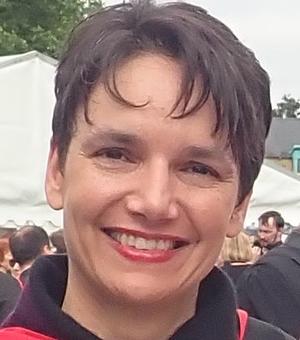Dr Katharina Ulmschneider
Research Interests
Archaeological archives and the history of European archaeology in the 19th and 20th centuries; Lantern slide and glass plates images: the evolution of landscapes, monuments and places; Early medieval archaeology of northwest Europe: economy, markets, towns, coinage, minting, and the development of settlement hierarchies; Metal-detector finds and archaeology: interpreting metal-detector finds and sites in the landscape.
Primary Geographical area
Northern Europe
Research Profile
Senior Research Fellow in Archaeology, Worcester College, Oxford
Associate Member of the Archives and Records Association
Member of the Oxford Centre for Late Antiquity
Member of the Oxford University Heritage Network
Fellow of the Society of Antiquaries
Blogs
Current Activities
• Co-Director, HEIR (Historic Environment Image Resource): interdisciplinary image database. Scanning, crowd-sourcing and re-photographing historic images of sites, monuments and landscapes all over the world to track global change. Based on Oxford University’s early lantern slide and glass plate collections. Funded by the Reva and David Logan Foundation, the Fell Fund, and Citizen Science Alliance
• Researcher: Scoping Survey of Visual and Material Cultures archives in the Humanities and Social Science Divisions. Funded by the Fell Fund.
• Co-Director, Jacobsthal Project: investigating the life and work of German wartime refugee archaeologist Professor Paul Jacobsthal. Funded by the Heritage Lottery and Reva and David Logan Foundation.
Exhibitions
Dec 2018-2022 – Iannou Classics Centre Oxford – Monumental Change? Classical Sites
and Landscapes ‘Then’ and ‘Now’
Sep. 2017- Jan. 2018 - OCAT Centre, Beijing, China – Sites and Images - the Archaeological
Object, in collaboration with the University of Chicago USA
Nov. 2014 – Ashmolean Museum Oxford - National Festival of the Humanities –
HEIR: From London to Constantinople
Jan-March 2012 – Oxford Town Hall - Persecution and Survival: a wartime refugee story: Exhibition of archives, artefacts, film, and oral histories
Recent Publications
2024 Ulmschneider, K. (2024). ‘Von China nach Oxford über Nazi-Deutschland: Die unerwartete Reise eines Keramik-Kamels aus der Tang-Zeit, in Mörike, T. and Zorn, B. (eds), Auf dem Rücken der Kamele, Ausstellungkatalog Weltmuseum Wien, Kadmos: Berlin, 85-97. https://shop.khm.at/shop/detail?shop%5BshowItem%5D=100000000037689-3218-0&cHash=13282319f627b231afb80314ea587172
2023 Kinory, J. and Ulmschneider, K. (2023), ‘Yorkshire in Oxford: The HEIR Project Digital Image Archive’, Briefing: The Magazine of the Yorkshire Archaeological & Historical Society 13 (2023), 44-6.
2021 Happa, J., Bennett, T., Gogioso, S., Voiculescu, I., Howell, D., Crawford, S., Ulmschneider, K., & Ramsey, C. (2021). ‘Bridging the discipline gap: towards improving heritage and computer graphics research collaboration’. EUROGRAPHICS Workshop on Graphics and Cultural Heritage, Chalmers, A. and Hulusic, V. (eds), Eurographics Proceedings, 127-130. https://doi.org/10.2312/gch.20211416
2021 ‘Children in the attic: family, emotion, and material culture in a post-medieval liminal space’, in E.J. Kendall and R. Kendall (eds) The Family in Past Perspective: An Interdisciplinary Exploration of Familial Relationships through Time. London and New York: Routledge (with S. Crawford and P. Salmon), 116-33.
2020 ‘’Then’ and ‘now’: tracking a changing world with help from the public’, arc magazine 367 (Archives and Records Association), 24-6.




